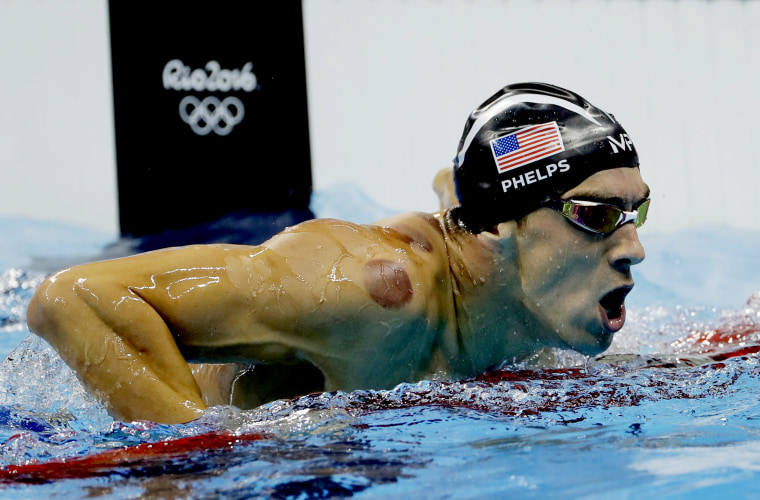Why are some Olympic athletes sporting large purple spots?
The circles appearing on the arms, legs and backs of U.S. athletes like Michael Phelps, Natalie Coughlin and Alex Naddour result from a practice called cupping.
If you haven't heard of it, that's not because the practice is new — it's actually ancient. Cupping is one of the oldest forms of Chinese medicine, dating back to the fourth century, according to Acupuncture Today, a newspaper about alternative medicine.
Standard cupping involves a glass cup and a flammable substance which heats the cup while it's on the skin. When the flame goes out, suction is created.
In more modern cupping, called “air” cupping, a suction pump is attached to the cup, creating the vacuum-type pull on the skin, according to Acupuncture Today. Sometimes the skin is punctured before air cupping to draw out a small amount of blood. That's known as "wet cupping."
Based on photos posted by some Olympic athletes, they are practicing dry, air cupping, which causes surface capillaries to break, creating the purple bruise-like spots.
So, what's the goal?
Cupping is thought to balance energy, known as "qi" or "ch'i" (pronounced "kee" or "chee"), and redistribute the energy to the parts of the body that are lacking it, according to the American Cancer Society. Cupping is also thought to remove toxins, according to Acupuncture Today.
While the practice of cupping, which typically lasts five to 10 minutes, is considered mostly safe, scientists say more studies need to be conducted to determine whether there are benefits to cupping beyond a placebo effect.
A study released in January noted that more research was necessary, but added: "There is initial scientific evidence that dry cupping is able to reduce musculoskeletal pain," and the study's authors recommended taking advantage of the method "in the arsenal of musculoskeletal medicine."
“I have witnessed the benefits of cupping first hand in my clinic where patients report that it helps them with various musculo-skeletal pain conditions,” James Whittle, an expert in Chinese medicine and acupuncture at Blue Ridge Acupuncture Clinic in North Carolina, told NBC News.
While plenty of research done in China has showed that cupping improves circulation, those studies have not been published in English, Whittle said, adding, “therefore most of the benefits that I have observed clinically are anecdotal.”

